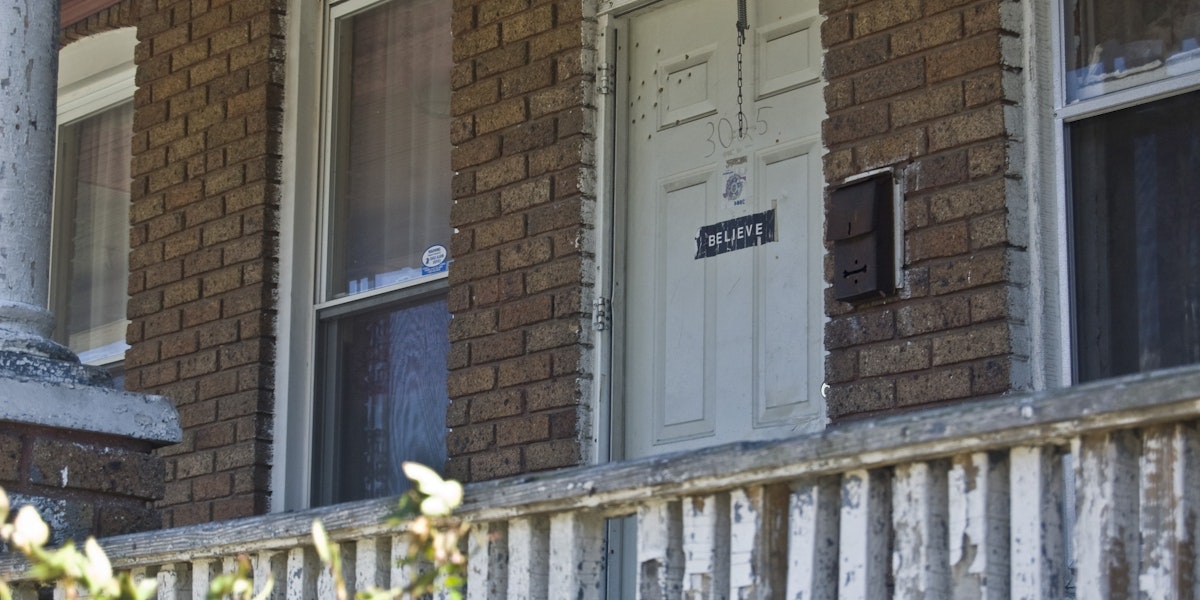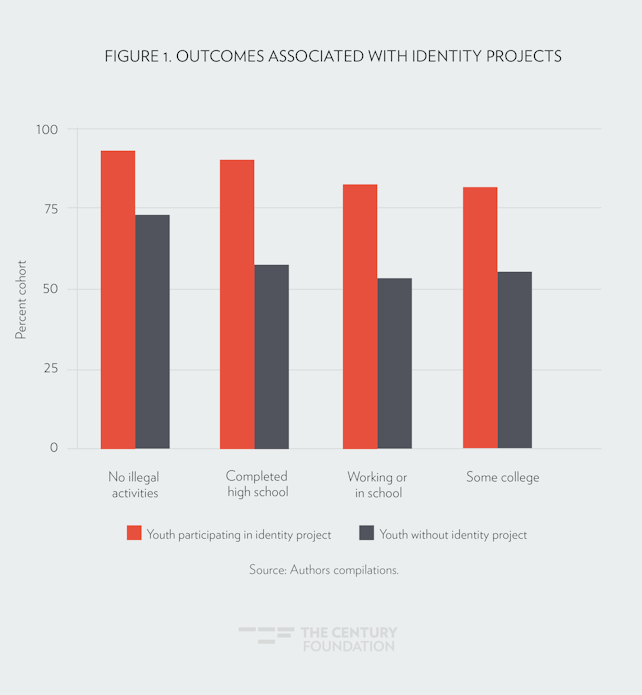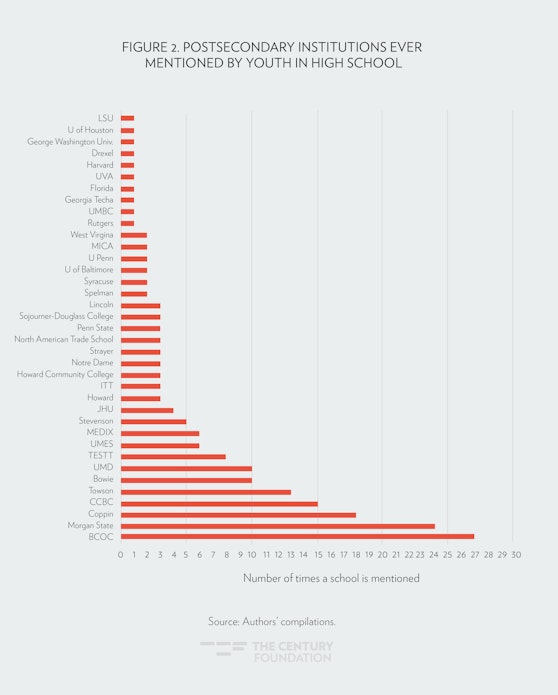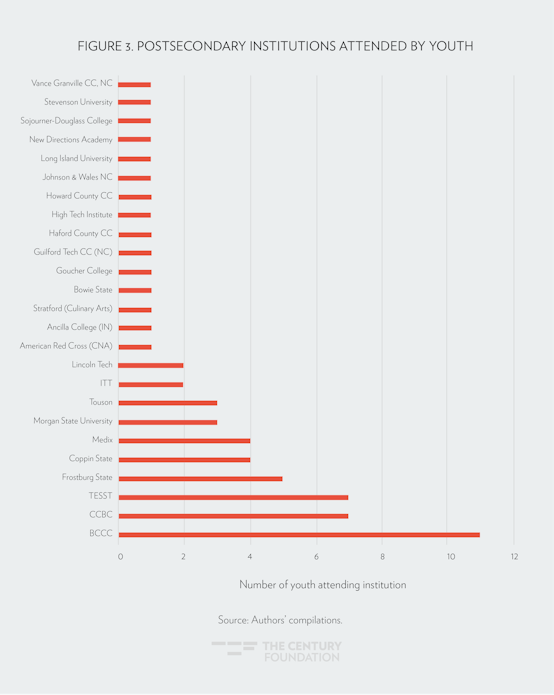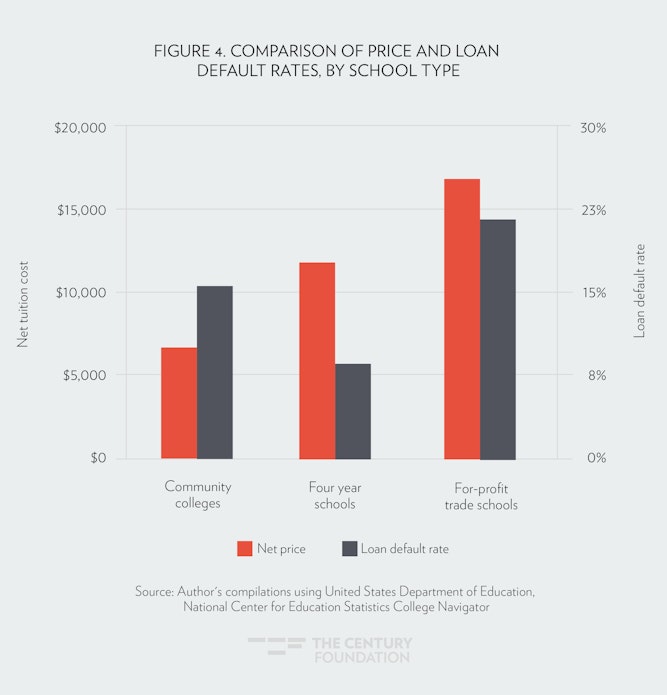Despite being touted as the land of opportunity, social mobility in the United States has become increasingly elusive: where you start out in life strongly determines where you end up.1 This social reproduction—essentially staying in the same social class as one’s parents—is made worse by the legacy of racial segregation. Two-thirds of African-American families will start off in the nation’s poorest neighborhoods and still be in this same set of neighborhoods a generation later, compared to only 40 percent of white families.2 As one consequence of these trends, poor African-American children in Baltimore have lower odds of escaping poverty than in any other city in America.3
Sandtown-Winchester, a predominantly black neighborhood in West Baltimore, sits firmly among the poorest of neighborhoods.4 Eight years before Freddie Gray was killed in Sandtown-Winchester, we launched a study of Baltimore parents and youth who had all hailed from public housing in the mid-1990s. Some of these families lived in Sandtown, and many of the youth we interviewed over the course of the next several years shared similar experiences with Gray. They all started off in high-poverty neighborhoods in Baltimore—most exposed to community violence and some poisoned by lead paint—and they spent almost all of their school years in Baltimore’s distressed public education system. But in 2015, as we watched the news coverage and listened to the public’s reaction to the uprising that followed Gray’s death, we saw a narrow and skewed image drawn of African-American youth in low-income neighborhoods—one that differed sharply from what we found in our fieldwork. Most of the 150 youth we interviewed were never involved in illegal activities. Most who were 18 or older had graduated from high school or received their GED, and most of these youth attempted postsecondary education—despite the long odds against them.
When these youth were zero to ten years old, each of their parents had signed up for a program called Moving to Opportunity (MTO) that would enable them to move out of the projects via a housing voucher with a special stipulation—they had to find an apartment in a low-poverty neighborhood and remain there for at least a year. Because the program was part of a federal experiment, some of these parents won the coin flip and got the voucher, while others—who landed in the control group—did not. Of the voucher winners, roughly 60 percent managed to move with the program. We followed families from both of these groups to explore how the lives of young people from deeply disadvantaged origins unfold as they approach adulthood.5
Their stories show us how social reproduction—in which children are “stuck” in the same social class as their parents—happens.
Their stories show us how social reproduction—in which children are “stuck” in the same social class as their parents—happens. While most of the youth in our sample held mainstream aspirations of obtaining stable employment to be financially independent, nearly one in five who were not in high school anymore were “disconnected”—not in college and not working. Yet perhaps just as importantly, their stories point out how we can interrupt the intergenerational disadvantage that runs counter to the American myth of upward mobility. We, as a society, can do better by them. In fact, it is costly not to. A Social Science Research Center study estimates that the cost to society of disconnected youth reached $27 billion in 2013.6
In what follows, we describe three sets of policy recommendations that emerge from our research, published in a new book, Coming of Age in the Other America (with Kathryn Edin). Taken together, these policies have the potential to disrupt the cycle of intergenerational inequality and support youth as they try to become the adults they want to be, if not more.
Policy Recommendations
How do we keep young people out of harm’s way, and help them grow up in safe, opportunity-rich neighborhoods? How do we support adolescents’ quest for meaning by helping more of them grasp onto an identity project, ideally one rooted in a web of peer and institutional supports? How can we better scaffold these youth through the postsecondary education landscape, particularly those who feel a sense of urgency to take an expedited path to adulthood?
Expanding Neighborhood Opportunities for Disadvantaged Youth
In a country as wealthy as the United States, it should be shocking that something as simple as where a person is born—which neighborhood, which town—can have such a dramatic impact on life. Our poorest urban families typically live in neighborhoods with high unemployment rates, deteriorating and vacant housing, schools where few students meet basic achievement standards, and disturbingly high rates of violent crime. African-American families are even more likely to live in these disadvantaged neighborhoods, due to this country’s ongoing legacy of racially segregated housing policies and practices. The neighborhood itself becomes a legacy as the next generation often finds itself in a similarly poor neighborhood.7
However, we found that a set of social policies—in our case, a housing mobility program, plus the large-scale demolition of highly distressed public housing in Baltimore—managed to disrupt the intergenerational transmission of neighborhood disadvantage. Beginning in the mid-1990s, most of Baltimore’s largest public housing developments were demolished through the HOPE VI program funded by the Department of Housing and Urban Development. While most were rebuilt into new developments with mixed income housing, this transformation reduced the amount of affordable housing and severed some social networks. Yet it also dispersed pockets of concentrated poverty, resulting in a nearly 30 percent reduction of high-poverty tracts in Baltimore City.
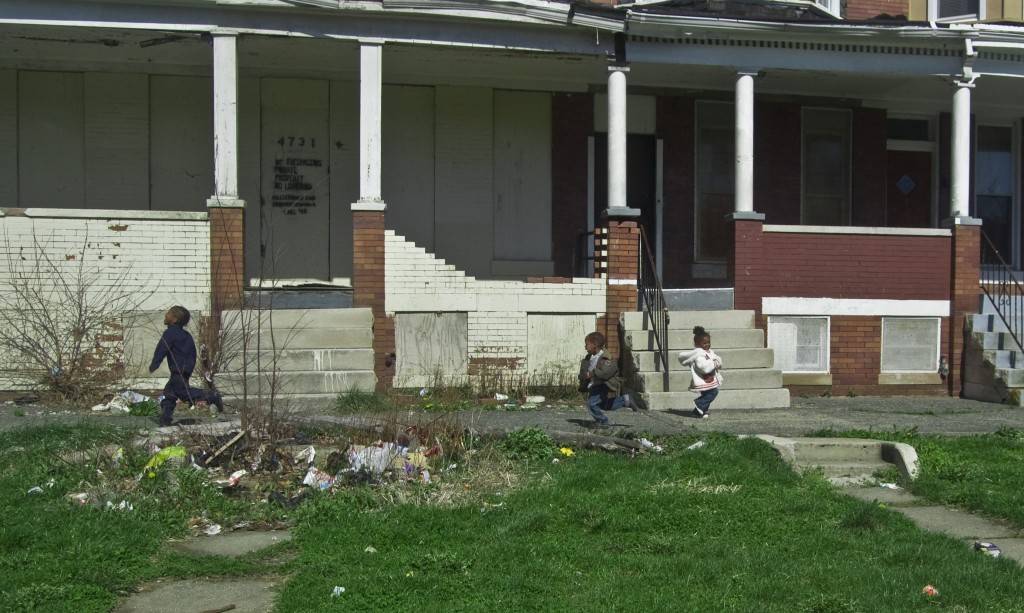
What this meant for our youth was two-fold. First, no matter what MTO group their parents had been randomly assigned to, most moved out of the high-poverty tracts (where, on average, half of their neighbors were poor) either with the MTO voucher or because of HOPE VI demolition. Second, their new neighborhoods, while hardly affluent, were substantially less poor, with, on average, a poverty rate of about 25 percent. Three-quarters of the youth saw their neighborhood poverty drop by over 30 percent. The chances that youth and their family members would be victimized in these new neighborhoods dropped too—from almost half of the experimental group reporting that a household member was victimized in the last six months at baseline, to about 20 percent by the final evaluation study.8
This change in neighborhood can dramatically affect a youth’s life chances. Here’s how Christopher, a twenty-one-year-old who moved from the troubled Murphy Homes high-rise project, described the transformation:
Every day [at Murphy] you would hear a gunshot, or every day you would see somebody fighting, and you never know, like, when is that going to happen to you, or when, you know, it was gonna be your family member, or when you was gonna have to bear it all, just go out there and just fight a war or whatever… I think if I wouldn’t’ve left Murphy Homes, I probably woulda been a disruptive kid… out running with people who had a record, or maybe selling drugs, because that’s the lifestyle I was around. So I think it was a better purpose for me to move… So I believe that my move, or my schools actually helped my life.
In the mid-1990s, the youth in our study were tightly concentrated in two main pockets of the city containing most of the high-poverty neighborhoods. But fifteen years later, they were dispersed throughout the city, and even somewhat around the metropolitan area. Maps 1 and 2 illustrate this neighborhood difference that Christopher reflected on. Each dot represents where a youth lived at the time—in the census tract, not the exact address. The maps show clearly that in 2010, they are living in a much wider range of neighborhoods than where they started out from. There is still clustering in poor neighborhoods, since this is frequently where subsidized housing is located, but some youth have landed in neighborhoods that are working-class to middle-class.
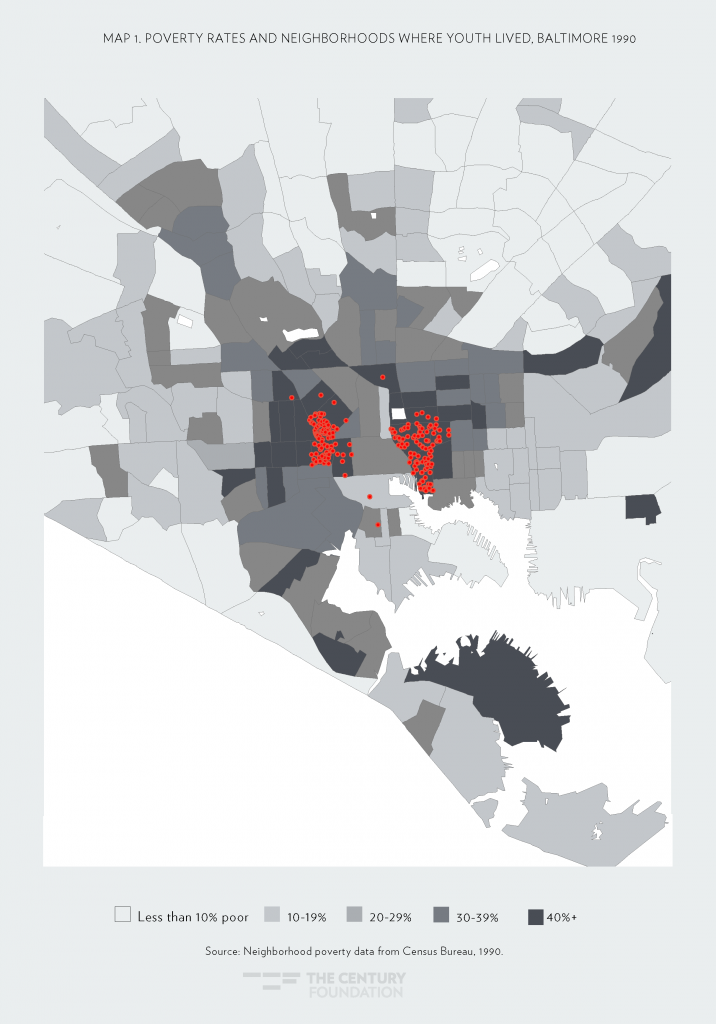
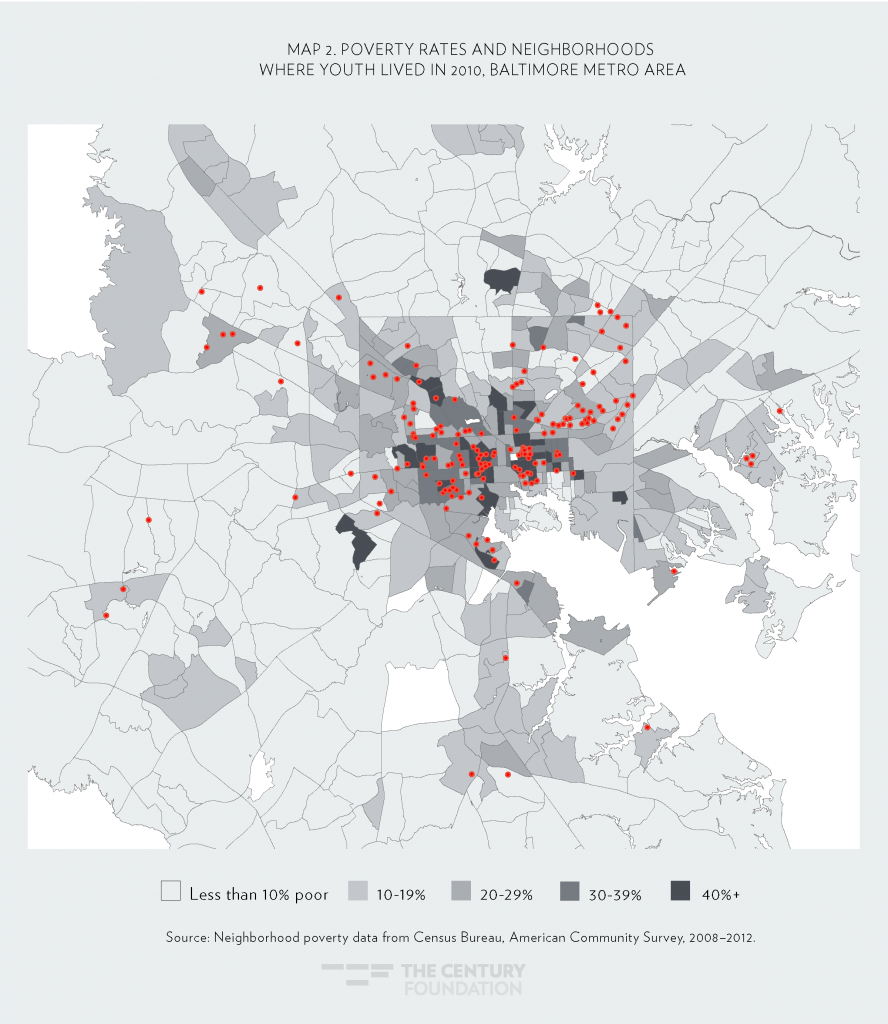
While the youth in our study experienced a large drop in neighborhood poverty, few ended up in the most opportunity-rich neighborhoods and schools in the region, and many still live in areas where poverty rates and violent crime are too high. We must do better than this. So what are evidence-based strategies that increase the chances that low-income children can grow up in high-opportunity neighborhoods? Unfortunately, we have little empirical evidence that place-based interventions generate significant gains for residents, and few examples of successful community development strategies that lower poverty, decrease violence, and improve school quality without significant displacement of the community’s original families. This does not mean that community development can’t work; rather, it means that it may be difficult to measure the impacts of some community-based programs, while others may be hampered by the persistence of violent crime and the absence of significant labor market investment.9 However, we do have evidence from other housing programs that have provided low-income families with the chance to live in low-poverty neighborhoods with high-performing schools.
One strategy is to better leverage housing choice vouchers to help families reach opportunity neighborhoods. Unfortunately, most households that receive federally funded housing vouchers live in neighborhoods that are no more affluent than those of unassisted households that are equally poor.10 There are several factors constraining their ability to use their vouchers in more advantaged neighborhoods, including landlord discrimination against voucher holders, access to public transportation, a short time-span to find housing, and HUD’s “Fair Market Rent” guidelines, making it less profitable for landlords in areas with higher housing costs to participate. There are a variety of ways to reduce these barriers, and one approach is a geographically targeted voucher program with ongoing counseling. The Baltimore Housing Mobility Program (BHMP) has relocated over 3,000 families to high-resource suburbs since 2003. Designed as a partial remedy for a class-action desegregation lawsuit filed against HUD and the Housing Authority of Baltimore City in the 1990s, BHMP offers low-income black families a voucher that requires recipients to lease up in neighborhoods that are below 10 percent poor, below 30 percent African-American and with less than 5 percent of the neighborhood’s residents living in subsidized housing.11 The program combines comprehensive counseling (housing search assistance, credit repair, neighborhood tours, second-move support) with innovative programmatic features (like security deposits, landlord recruitment, higher payment standards, and regional administration) to facilitate these moves.12 BHMP participants have moved from high-poverty, predominantly African-American neighborhoods with poor-performing schools to communities where only 8 percent of their neighbors were poor, and where 75 percent were white, on average. The quality of the local schools was much higher, and preliminary research suggests that after an initial transition period, children’s academic achievement also improved after moving with the program.13
Affordable housing in affluent neighborhoods can be created in other ways, too. One of the most famous examples comes from New Jersey, where African-American community residents fought all the way to the state Supreme Court to build an affordable-housing development in the middle-class town of Mt. Laurel. Built after decades of court battles, the Ethel Lawrence Homes is mixed-income by design, offering units to families across a range of incomes. Part of the funding for the development came from the Low-Income Housing Tax Credit (LIHTC) program, which incentivizes investors and nonprofit developers to add to the supply of affordable housing.14 Despite the initial fears of white residents, crime rates continued to fall and property values rose further after the opening of Ethel Lawrence. The families there benefited too. Those moving to Ethel Lawrence (compared to those who applied for units but could not be accommodated due to space) experienced significantly less exposure to neighborhood disorder and violence and reductions in psychological distress.15 In addition, parents were more likely to be economically self-sufficient, and children attended schools that were higher in quality and lower in disorder.16
Those moving to Ethel Lawrence (compared to those who applied for units but could not be accommodated due to space) experienced significantly less exposure to neighborhood disorder and violence and reductions in psychological distress.
Inclusionary zoning—where developers must include a certain percentage of affordable units for purchase or rental—is another strategy that creates affordable housing in middle and upper-class communities to low-income families. In Montgomery County, Maryland, such a policy has led to the construction of over 12,000 homes that are moderately priced. The local public housing authority has purchased a portion of these homes and leases them to families whose income qualifies them for public housing. Heather Schwartz, a researcher at RAND, found that over a five-to-seven year period, those residing in such units saw the gap between their children’s test scores and those of their more affluent counterparts drop by a half in math and by a third in reading.17
Supporting Identity Projects
Nearly half of the youth that we interviewed had developed what we call an “identity project,” that kept them afloat during rough times and helped many of them stay on the course toward a brighter future. These identity projects manifest in many ways: building coops for pigeons, training to be a Police Explorer cadet, investing in a dream of higher education, associating with Goth culture, dancing, and starting a nonprofit for adolescent girls.
Identity projects offer sources of meaning that provide a strong sense of self, and are linked to concrete activities to which youth commit themselves.18 They are often forged in direct opposition to the street, to demonstrate that youth “are not about that life,” and that they have bigger dreams and goals to “be about something.”19 We also find that identity projects help some youth avoid associations with delinquent peers and instead forge connections with similarly-minded peers, teachers, and mentors. The origin and form of identity projects varies immensely. At their weakest, identity projects are activities youth pursue in private—what we refer to as a “DIY” identity project, like writing poetry, tending to pets, and making music online. Identity projects are more protective when they link youth to like-minded peers through shared interests in the arts or music. In their most robust form, they connect young people with institutions that have a ready-made set of concrete activities and supports, like occupationally focused themes at school, youth programs at religious institutions, and non-profit groups that help youth learn 3-D printing and other technology. And it is when youth form identity projects in the context of institutions that we see the strongest link with future vocational goals.
Those with identity projects were more likely to finish high school, more likely to continue on to post-secondary education, and less likely to be involved in illegal activities (see Figure 1). Identity projects forged within an institutional context seemed to offer an even stronger push forward, as they were twice as likely to be “on track” (working or in school) than those with a DIY project.
Programs which link young people up with like-minded peers and—better yet—with institutions (with their ready-made activities, resources, and networks) work best. Those institutions most easily within reach are our public schools, as well as youth activities sponsored by local government, such as summer jobs programs. Bella’s case highlights how adults and activities at her neighborhood high school provided her with the structure and guidance to find an identity project and forge a path to college. She played on the school’s basketball team and her coach’s open-door policy offered a source of support when Bella needed a space to talk. As a side benefit, her coach gave her advice about college and how to search for scholarships. Moreover, her coach suggested that Bella get involved in a community service club, where she read books to students at a nearby elementary school. Bella explains how community service, and her coach’s watchful guidance, deepened her engagement with school. “Once I got into sports and the clubs and stuff, it pretty much drew me more into school, [gave me] the motivation to finish.” In addition, Bella’s experience in the Business and Finance Academy at her school helped to put her on a path to college with a professional focus. She was recruited to join the math club by a teacher, and participating in this club ignited her desire to become a certified public accountant. Even more fascinating for her was the annual competition organized by the Entrepreneurship Program within the academy. Over the course of a year, students had to develop a plan to start their own business and present their work to a panel of judges. Bella won first place all three years that she competed. Now a college student majoring in business, her identity project that she fashioned in high school helped her deepen and refine her talents. Though these activities for Bella occurred in a school setting, the nonprofit sector can play a vital role too, through programs like the Boys and Girls Clubs and the Police Athletic League.
To provide institutional spaces for youth to discover a passion that can become an identity project, we need to stop the significant reductions in funding for the arts, sports, and extracurricular activities in public schools. As public school systems have focused on boosting students’ scores in math and reading, arts education and extra-curricular activities have withered.20 This is particularly the case in schools and school districts with higher proportions of low-income students.21 In New York City’s public schools, spending on art supplies dropped from $10 million in 2007 to just over $2 million three years later.22 In 2013, Philadelphia’s magnet creative and performing arts high school was forced to forego their annual musical due to the substantial cuts to the school district. Rather than being “frills” on top of the basics of reading and math, these are essential outlets for youth to explore what gives them meaning and what they can be “about.” These activities can take place out of school too, but we found in our data that the institutional context is a key element. Conducting this exploration under the guidance of a caring adult and in structured activities with peers can make an enormous difference in whether a youth stays “on track” or ends up floundering or disconnected.
These programs can be career-oriented as well. Career Academies have shown a successful track record over the last few decades. These learning communities (composed of about 150 to 200 students) are sited within high schools, and organized around a career theme, such as business or health. A randomized controlled trial found significant earnings gains over the next eight years relative to a control group. These gains were concentrated among males, who earned nearly $30,000 more over this time period than their control counterparts. While students in Career Academies were not more likely to graduate from high school or enroll in college, they were 23 percent more likely to be living in an independent household with a partner and child(ren), 13 percent more likely to be married, and 16 percent more likely to have custody of their children than those in the control group by their mid-twenties.23
Reconfiguring the Postsecondary Landscape for Success
Contrary to the media hype around twenty-somethings taking the “long road” to adulthood—some even returning home to live with their parents after college—we found that the Baltimore youth in our study were driven by financial necessity and a sense of a shortened life expectancy to take as quick a leap as possible into adulthood. We refer to this as “expedited adulthood.”
But expedited adulthood leads youth into a trap. With little information and few resources, some youth trade in four-year college dreams for the quicker path provided by trade schools and entry-level jobs. Yet their alternatives in the labor market are bleak. The youth in our sample (particularly the males) face racial discrimination and few options, even for those who completed high school. The jobs they manage to obtain after high school are typically low-wage and rarely promise full-time work, but require full-time availability due to frequent shift changes. Many youth juggle multiple jobs from temp agencies that pay far less than regular employees, and after covering transportation costs, they rarely make enough to cover the bills. Plus, these jobs cost them their time, but do not provide the dividends of a career path, the more satisfying work that so many seek.
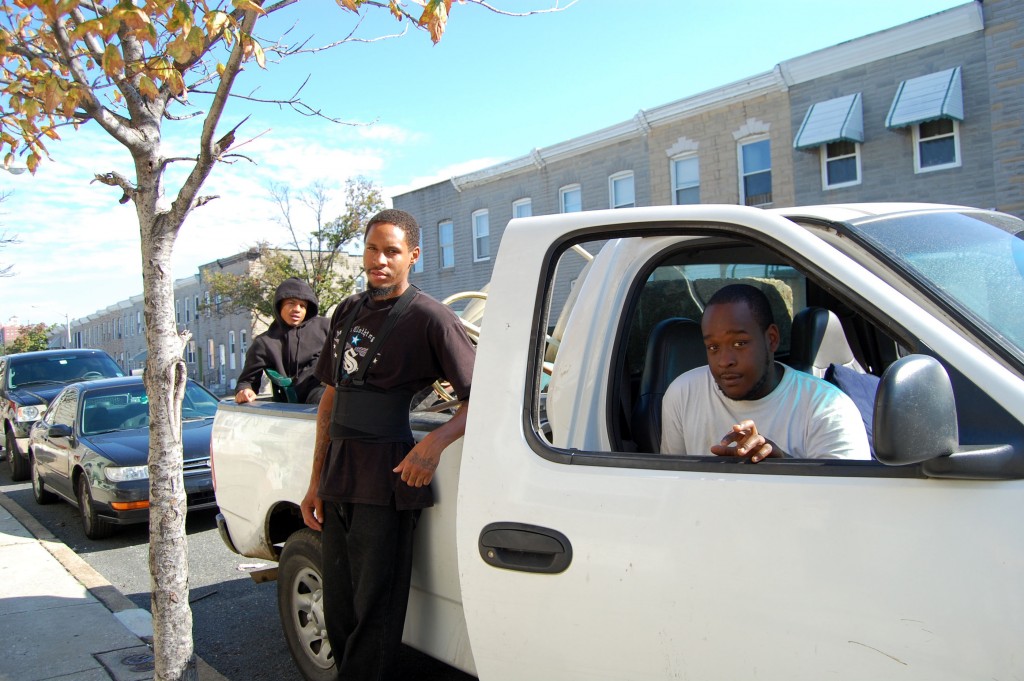
For those who opt for the higher education track, they encounter roadblocks. The timeline for a four-year degree is perceived as far too long, uncertain, and expensive; instead they tend to make their postsecondary education decisions on the basis of how closely linked the course of study is to a concrete occupation, and on how quickly they can finish school and start work. Twenty-one-year-old Crystal summed up the logic of many in our study when she reflected, “So why wait for, like, years to become something, when you can become something in like the course of a year [at a trade school]?” Unfortunately, this strategy ends up costing them in the long-run, when quick decisions to launch mean they have to commit to a trade before they have had a chance to explore what occupational paths really fit their abilities and interests. This quick launch triggers a series of fits and starts as they learn the hard way what they are interested in and how to navigate the confusing maze of community colleges and exploitative traps of for-profit trade schools. Often, they end up in debt with no degree to show for their investment.
But it’s not just the urgency to launch that creates limited opportunities for them. They were also making higher education choices from within a limited choice set. Like youth from all social classes, they drew their information from their family and friends, many of whom were in or pursuing the same low-wage professions such as nursing assistants, phlebotomists, and security guards. As a result, of the top three schools that the youth attended, one was a for-profit trade school, and two were community colleges. (See Figures 2 and 3.)
Missing from the schools they considered and applied to were local four-year colleges and universities that have a record of higher degree completion rates and lower student loan default rates. (See this table compiled by the authors and Figure 4.)
High school students need better information about what their options are after graduation so that they can compare how various post-secondary options stack up against one another. This includes learning about the average time to completion, costs (including the real cost to the student after grants), job placement rates, and average wages in the occupation. Currently, at least in Baltimore’s public high schools, this is not happening as much as it should.
One successful strategy that can be replicated is the College Coach Program (CCP).Implemented in twelve Chicago public high schools, counselors encouraged students to make concrete postsecondary plans and met with students one-on-one and in groups to build rapport and trust. They walked through the college application process step by step with both students and their families. Students from schools with the College Coach Program were 13 percent more likely than those without coaches to enroll in college and were 24 percent more likely to attend a non-selective four-year college than a two-year college.24
For students who do not want to or are not ready to matriculate directly to four-year colleges, community colleges can be improved to better serve their needs and increase their degree-completion rates. We suggest four strategies, three of which are adopted from a study of “ideal type” private occupational colleges by sociologist James Rosenbaum and his colleagues.25 First, community colleges should take a hands-on approach to helping students make informed choices, including clearly outlining course requirements, job placement rates, and salary expectations. Second, focusing on a few programs that are carefully “packaged” can prevent students from enrolling in extraneous courses that waste time and dollars. Third, community colleges should explicitly prepare students for the job search, with resume writing and interview-skills workshops and job fairs. Finally, students frequently drop out of community college because they become discouraged by taking remedial courses that do not count toward their degree. Florida now administers the college placement test to high school juniors so that they can be assigned coursework to address their skill gaps in their senior year.26
In addition, we have to consider what kind of labor market low-income young people are entering, whether it is directly from high school or after some postsecondary education. The weakening of unions, offshoring, and technology-based changes in skills that reward those with a college degree have weakened the prospects of unskilled and semiskilled workers. Expanding the EITC, especially for those without dependent children, is one way to make work pay, as is increasing minimum wage. But a focus on work conditions—especially involuntary part-time employment and unpredictable hours isa fundamental need as well.27
Formal apprenticeships are another approach, albeit one used more often in other countries like Germany. In 2015, the Department of Labor (DOL) distributed $175 million to forty-six programs that plan to train more than 34,000 new apprentices over the next five years in manufacturing, but also in health care, information technology and other high-growth fields. Los Angeles’s OpenTech is designed to train “at-risk” youth for jobs in biotechnology and other high-growth technology fields. A consortium in Nevada will create apprenticeships in advanced manufacturing for gaming technology and electronic cars.28 Philadelphia Works has designed a curriculum to bolster literacy and math skills to prepare youth coming from underperforming schools for careers in information technology and behavioral health.29 More innovation, along with rigorous evaluation, should be focused in this area.
Conclusion
Social reproduction is not inevitable. We know enough about effective programs to act now. Policies that offer low-income families affordable housing in opportunity-rich neighborhoods, provide youth with a range of programs in schools and other settings so they can pursue their interests, and give low-income young adults affordable post-secondary education with concrete avenues to stable jobs can help launch youth out of poverty as they move into adulthood. To not act on these policies is at best an expensive folly; at worst, it is intentional neglect.
To not act on these policies is at best an expensive folly; at worst, it is intentional neglect.
These changes can happen at multiple levels and some are already in the pipeline. Housing mobility programs that help households to use the housing choice vouchers in areas of opportunity are in effect in the Baltimore metropolitan area and elsewhere, but we need to increase these efforts. We should expand the Housing Choice Voucher Program by: requiring that a share of housing vouchers in each housing authority be used in opportunity neighborhoods; aggressively recruiting landlords in these areas; using small area Fair Market Rents to allow for higher rents in more middle-class neighborhoods; and offering counseling to families before, during and after moves. The recent Supreme Court ruling, Texas Department of Housing and Community Affairs v. Inclusive Communities Project, as well as the Affirmatively Furthering Fair Housing rule from HUD, have strengthened the hand of fair housing organizations that push for LIHTC-funded and other affordable housing to be built in communities that are not poor and racially-segregated.

Supporting identity projects for more youth like Bella can only happen if we stop cutting the budgets of struggling school districts—whether these are in rural, suburban, or urban areas—to the bone. A school that is merely a warehouse where students learn to test well in reading and math will not help many youth find the inspiration and meaning necessary to stay motivated in school and move forward into adulthood. But as municipalities hit the ceiling of how much property tax revenue they can generate, and as many state legislatures are reluctant to increase education spending to pre-Recession levels, public schools with large shares of low-income children are left in a real quandary with little “extra” to offer students in terms of creative and performing arts, sports, and extra-curricular academic programming. Nonprofit organizations and neighborhood recreation centers have continued to provide out-of-school activities, but what they have to offer is dependent on municipal budgets and the whims of funders.
Integrating programs which effectively and comprehensively inform high school students about their choices after graduation is a necessary step toward making their launch into adulthood less haphazard. Complementing this information with peer and mentor supports, along with making higher education affordable is vital for youth who do well in school and want to pursue a degree in higher education, but who may be the first in their family to do so. We have to figure out how to minimize the traps in higher education as well. The closing of the for-profit educational chain of Corinthian College last year signaled the need to hold these institutions accountable. The federal government’s introduction of the “gainful employment rule” illustrated one way of holding such institutions accountable and preventing them from preying on students who are in vulnerable financial situations, by making bogus promises about jobs and trapping them in debt with little to show for it.30
We can do more for youth who are striving to accomplish educational milestones and enter occupations their parents only dreamed of.
We can do more for youth who are striving to accomplish educational milestones and enter occupations their parents only dreamed of. While people in Sandtown-Winchester and across Baltimore made their outrage known in the wake of Freddie Gray’s death, much of the media inaccurately depicted the potential of youth from poor neighborhoods. We know that their range of paths into adulthood can be as diverse as youth anywhere. But to enable them to reach their potential, we have to provide them with expanded neighborhood opportunities, support for identity projects, and a roadmap to navigate their postsecondary transitions.
Cover Photo: Jennifer Klein/Park Heights.
Notes
- Karl Alexander, Doris Entwisle, and Linda Olson, The Long Shadow: Family Background, Disadvantaged Urban Youth, and the Transition to Adulthood (New York: Russell Sage Foundation, 2014).
- Patrick Sharkey, Stuck in Place: Urban Neighborhoods and The End of Progress Toward Racial Equality (Chicago: University of Chicago Press, 2013).
- Raj Chetty, Nathaniel Hendren, Patrick Kline, and Emmanuel Saez, “Where Is the Land of Opportunity? The Geography of Intergenerational Mobility in the United States,” National Bureau of Economic Research Working Papers 19843 (2014), http://www.nber.org/papers/w19843.
- For a look at Sandtown-Winchester over time, see Peter Rosenblatt and Stefanie DeLuca, “What Happened in Sandtown-Winchester? Understanding the Impacts of a Comprehensive Community Initiative,” Urban Affairs Review (2015), https://www.researchgate.net/publication/287390168_What_Happened_in_Sandtown-Winchester_Understanding_the_Impacts_of_a_Comprehensive_Community_Initiative.
- A third group got a voucher as well, but it had no stipulation that they live in any particular kind of neighborhood. We interviewed parents and youth in this group in 2003–04, but not in 2010.
- Kristen Lewis and Sarah Burd-Sharps, “Zeroing in on Place and Race: Youth Disconnection in America’s Cities,” Measure of America (June 10, 2015), http://ssrc-static.s3.amazonaws.com/wp-content/uploads/2015/06/MOA-Zeroing-In-Final.pdf. This is measured in terms of the costs of youth-focused expenditures on incarceration, Supplementary Security Income, and other public benefits.
- Marcus L. Britton and Pat R. Goldsmith, “Keeping People in their Place? Young-Adult Mobility and Persistence of Residential Segregation in U.S. Metropolitan Areas,” Urban Studies, 50 (2013): 2886–903; Antonio Spilimbergo and Luis Ubeda, “Family Attachment and the Decision to Move by Race,” Journal of Urban Economics 55 (2004): 478–97.
- Stefanie DeLuca, Susan Clampet-Lundquist, and Kathryn Edin, Coming of Age in the Other America (New York: Russell Sage Foundation, 2016), Table 2.6, 51.
- Peter Rosenblatt and Stefanie DeLuca, “What Happened in Sandtown-Winchester? Understanding the Impacts of a Comprehensive Community Initiative,” Urban Affairs Review Published online December 2015; Anne C. Kubisch, Patricia Auspos, Prudence Brown and Dewar Tom, Voices from the Field III: Lessons and Challenges from Two Decades of Community Change Efforts (Washington, DC: The Aspen Institute, 2010).
- Kirk McClure, “Deconcentrating Poverty with Housing Programs,” Journal of the American Planning Association, 74 (2008): 90–99; Kirk McClure, “The Prospects for Guiding Housing Choice Voucher Households to High Opportunity Neighborhoods,” Cityscape: A Journal of Policy Development and Research, 12 (2010): 101–122; Molly Metzger, “The Reconcentration of Poverty: Patterns of Housing Voucher Use, 2000–2008,” Housing Policy Debate, 24 (2014): 544–67.
- In 1996, the court found in Thompson v. HUD that HUD did not offer equal access to African-Americans seeking subsidized housing across the Baltimore metropolitan area. As a remedy, HUD was forced to provide vouchers to people living in public housing or on the waiting list for public housing or the HCVP before August 2002. The remedy was fashioned to direct families to neighborhoods that were not poor, racially-segregated, and high in subsidized-housing concentration. Voucher-users had to remain in such a neighborhood for a year, and then were free to use the voucher without geographic restrictions.
- Those in the BHMP were offered housing and financial counseling during and after relocation, as well as workshops on budgeting, credit repair and other household management strategies. The organization administering BHMP works to recruit landlords in eligible tracts throughout the metropolitan area. In BHMP, exception payment standards are provided, so that families can rent units priced up to 130 percent of area FMR, which is a critically important modification. The program vouchers are also fully portable—meaning they can be used in any county without administrative hassle—and security deposit assistance is provided by the Abell Foundation to facilitate first moves.
- Stefanie DeLuca, Philip Garboden, and Anna Rhodes, The Power of Place: How Housing Policy Can Boost Educational Opportunity, A Report to the Abell Foundation (2015), http://abell.org/publications/power-place-how-housing-policy-can-boost-educational-opportunity.
- Created in 1986, LIHTC has helped finance the construction of 2.6 million rental units as of 2013. Developers can apply to receive the tax credits from the state and apply them when they build or rehabilitate rental complexes in which a certain percentage of units are reserved for low-income renters. On average, units funded by LIHTC are located in tracts that are less poor than other types of subsidized housing, but more poor than the average tract in the metropolitan area.
- Massey et al. (2013) used propensity score models to compare people who had applied and had gotten in to the Ethel Lawrence Homes with people who had applied but had not yet gotten in.
- Douglas Massey, Len Albright, Rebecca Casciano, Elizabeth Derickson, and David Kinsey, Climbing Mount Laurel: The Struggle for Affordable Housing and Social Mobility in an American Suburb (Princeton, NJ: Princeton University Press, 2013).
- Heather Schwartz, Housing Policy Is School Policy: Economically Integrative Housing Promotes Academic Success in Montgomery County, Maryland (New York: The Century Foundation, 2010), https://tcf.org/assets/downloads/tcf-Schwartz.pdf. Since families in Montgomery County’s scattered-site public housing were randomly assigned to their units and children attended their neighborhood elementary schools, it is possible to compare children in the most-advantaged schools with those in the least-advantaged schools in order to discern whether the achievement gap between affluent and poor children could be reduced. Moreover, children from public-housing households who were in the most-advantaged schools had significantly higher reading and math scores than their counterparts in the least-advantaged schools in the county.
- See also Niki Harre, “Community Service or Activism as an Identity Project for Youth,” Journal of Community Psychology 35 (2007): 711–24, http://onlinelibrary.wiley.com/doi/10.1002/jcop.20174/abstract. Our conception of an identity project is slightly different from Harre’s, as ours has an emphasis on concrete activities as well as sources of meaning and identity.
- See also Nancy L. Deutsch, Pride in the Project: Teens Building Identities in Urban Context, (New York: New York University Press, 2008). Deutsch found that youth in a Boys and Girls club use the “construction of the other as an oppositional mirror” of what they do not want to be. This image functions as a motivator for them “against which they can define their own sense of self” (102).
- Megan Kaplon, “Uphill Battle to Educate Young Artists.” Art Business News, March 25, 2015, http://artbusinessnews.com/2015/03/the-uphill-battle-to-educate-young-artists/; Marina Fang, “Public Schools Slash Arts Education and Turn to Private Funding,” Think Progress, accessed June 18, 2015, http://thinkprogress.org/education/2013/08/05/2412381/public-schools-slash-arts-education-relying-more-on-private-arts-funding/.
- Basmat Parsad, and Maura Spiegelman, Arts Education in Public Elementary and Secondary Schools: 1999–2000 and 2009–2010 (Washington, D.C.: National Center for Education Statistics, Institute of Education Sciences, U.S. Department of Education, April 2012), http://nces.ed.gov/pubs2012/2012014rev.pdf
- Anna Phillips, “Even Before Layoffs, Schools Lost 135 Arts Teachers,” New York Times, June 9, 2011, accessed on June 19, 2015, http://cityroom.blogs.nytimes.com/2011/06/09/even-before-layoffs-schools-lost-135-arts-teachers/.
- Dan Bloom, “Programs and Policies to Assist High School Dropouts in the Transition to Adulthood,” Future of Children 20 (2010): 89–108. http://www.ncbi.nlm.nih.gov/pubmed/20364623; James J. Kemple, and C. J. Willner, Career Academies: Long-term Impacts on Labor Market Outcomes, Educational Attainment, and Transitions to Adulthood (New York, NY: Manpower Demonstration Research Corporation, 2008).
- James Rosenbaum, Caitlin Ahearn, Kelly Becker, and Janet Rosenbaum, “The New Forgotten Half and Research Directions to Support Them,” William T. Grant Foundation Inequality Paper, 2015;
Jennifer L. Stephan, and James E. Rosenbaum, “Can High Schools Reduce College Enrollment Gaps with a New Counseling Model?” Educational Evaluation and Policy Analysis 35 (2013): 200–219, http://epa.sagepub.com/content/35/2/200.abstract. - James E. Rosenbaum, Regina Deil-Amen, and Ann E. Person, After Admission: From College Access to College Success (New York: Russell Sage Foundation, 2009).
- Mokher, Christine, Louis Jacobson, James Rosenbaum, and Robert LaLonde. 2013. Assessment of the Florida College and Career Readiness Initiative: Year 1 Report. CNA Corporation
- Julia Henley and Susan Lambert, “Unpredictable Work Timing in Retail Jobs: Implications for Employee Work-Life Conflict” Industrial and Labor Relations Review 67 (2014): 986.
- “Grants,” United States Department of Labor, http://www.dol.gov/apprenticeship/grants.htm
- Sarah Barr, “Federal Apprenticeship Grants Include Youth-Focused Programs,” Youth Today, September 10, 2015, accessed on October 4, 2015, http://youthtoday.org/2015/09/federal-apprenticeship-grants-include-youth-focused-programs/
- Mark Huelsman, “Betrayers of the Dream: How Sleazy For-profit Colleges Disproportionately Targeted Black Students,” The American Prospect (2015), accessed on August 1, 2015, http://prospect.org/article/betrayers-dream; United States District Court Northern District of Illinois Eastern Division, “Consumer Financial Protection Bureau v. Corinthian Colleges, Inc.,” last modified September 16, 2014, accessed on August 19, 2015, http://files.consumerfinance.gov/f/201409_cfpb_complaint_corinthian.pdf
